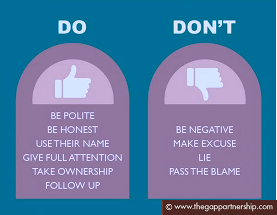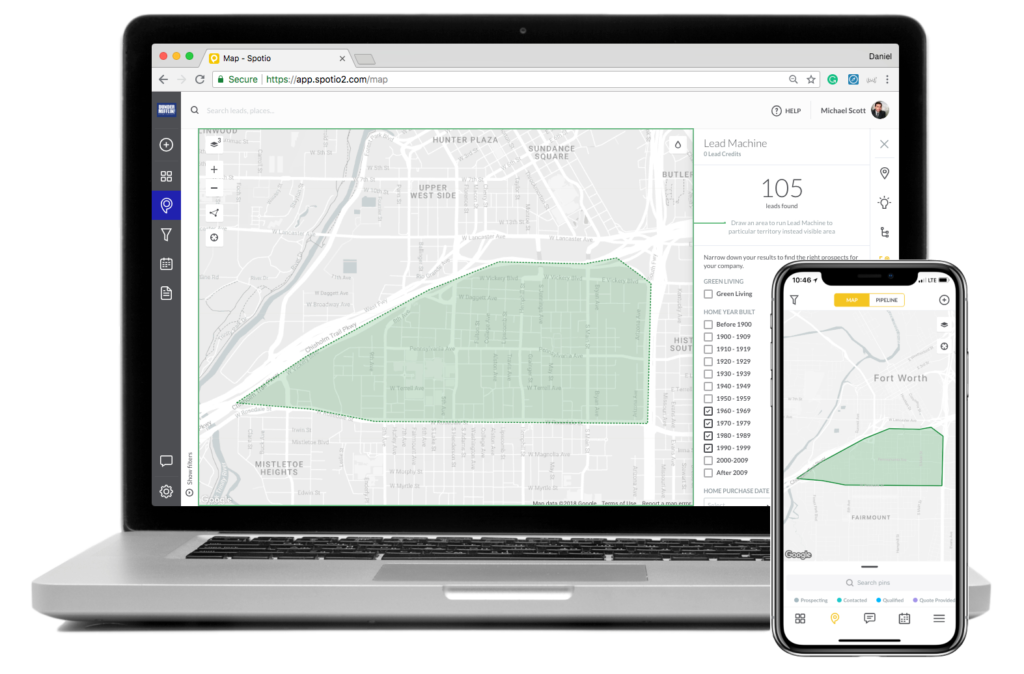Follow these 6 steps to get past the toughest gatekeepers:
Sales men and women are great with people. It’s just part of the job. But there’s one person that all salespeople fear. A person they dread interacting with. A person who can drain their motivation and slow momentum. A person they fear like the monster under the bed. This person is known as the gatekeeper.
Joking and drama aside, getting past the gatekeeper is among the most common challenges salespeople face. The ability to get past this potential roadblock is a critical skill for earning time with new prospects, yet many salespeople lack a strategic approach to engage gatekeepers. With the right plan, tools, tenacity, salespeople can get past the gatekeeper, or even better, get this person on their side to improve their odds for success.
In this post, we’ll discuss the role of the gatekeeper and provide proven tactics and scripts you can use to get past them and set more appointments.
What is a Gatekeeper in Business?
When you think of a gatekeeper in the literal sense, you might envision a security checkpoint – a person hired as muscle to keep unwanted traffic from reaching something or someone precious. A gatekeeper in sales is practically the same – It’s a person whose job it is to protect a decision maker’s time, energy, and priorities.
Gatekeepers and salespeople don’t usually mesh well. On one hand, a salesperson is looking to score meaningful time with a decision maker. Meanwhile, the gatekeeper is there to buffer uninvited distractions.

The gatekeeper role is often played by a company’s receptionist or a decision maker’s administrative assistant. In other businesses like a restaurant, it may be the waitstaff or a hostess, protecting management from day-to-day inquiries while allowing them to focus on meeting company objectives.
Since decision makers are often responsible for managing important company priorities, gatekeepers are put in place to help them maintain their focus. They do this by screening calls and turning away those that they think are not important. While often glossed over, gatekeepers are often some of the most intelligent, intuitive, and needed members of an organization.
6 Steps to Get Past the Toughest Gatekeepers (Scripts Included)
Getting past the gatekeeper is an art. Depending on the customer’s industry, internal politics, current situation, and time of year, your success with different strategies will vary. In this section, we introduce 6 strategies and scripts to get you started right away.

1. Lead with respect and integrity
When dealing with a gatekeeper, keep in mind that the person is playing an important and valued role in the organization.
By treating this person with respect, you show that you recognize their value and are committed to working with them, not around or above them. Little touches such as learning and using their name, and openly valuing their perspective and opinion go a long way.
Script:
Hello, <NAME>.
My name is <your name> and I’m calling on behalf of <company name>. I’m interested in speaking with your team about an offering, but I’m not completely sure that it’s a good fit for your team. Can I please steal 10 minutes of your time to get your opinion? I know your time is valuable, so I promise I won’t use more than 10 minutes.
Thank you.
By showing right away that you value the gatekeeper’s opinion, you remind them that they’re not simply a gatekeeper, but a valued member of the organization.
The key to this strategy is not just saying you value their time and opinion, but actually following through and honoring that throughout your engagement.
If you say you’ll only use 10 minutes of their time, set a timer and stick to ten minutes. If you say that you truly value their opinion, ensure that you spend more time listening than talking and incorporate their thoughts into your next steps.
If you’re able to get them on board with what you are offering, you may even turn a gatekeeper into an advocate within the prospect’s organization.
2. Add a personal touch

Another way to build credibility with a gatekeeper is to show your genuine interest in them as a person. When you have a chance to meet with a gatekeeper, take notes in your CRM, your phone, or even a pen and paper about their personal interests. Take genuine interest in these things and consistently remind them in your conversations that you’re interested in them as a person.
To take it a step further, look for ways that you can make their lives easier, either through your company’s offerings or otherwise. Sometimes the best way to do this is to simply ask, ”Is there anything I can do to make your life easier?”
Script:
Hi, <Name>.
I thought of you the other day when I passed by the tennis courts. How did you do at your last match? I remember you were concerned about your knee.
“Have you heard of <xyz product for your knee>. A friend of mine recently had the same challenges, and she swears by the results.
It’s important not to let the small talk detract from what you’re there to do – You’re there to sell. Your goal is to simply demonstrate that you value the gatekeeper as a person and respect their position of authority. Be mindful that you’re the one asking for a favor; you need them more than they need you.
3. Use basic manners – Please and thank you
This is perhaps the simplest and most overlooked strategy. When speaking with a gatekeeper, manners should be used in every sentence.
Examples:
| I’m not sure who the right person is for my call. Can you please help me figure this out?
| I know <decision maker> has been extremely busy lately, can you please help me find a time on his or her calendar that won’t interrupt his or her <specific goals or activities>
| Thank you so much for taking my call. I am looking for the person who handles <specific function>. Can you please help direct me?
It shouldn’t be a surprise since people love to be treated with respect. Using manners goes a long way in building rapport with gatekeepers. Just as well, it reminds gatekeepers that they are important and helpful. It’s human nature to appreciate being reminded of these things.
4. Show you’re listening
Nobody likes spending time with someone who doesn’t listen and show empathy. This is no different for gatekeepers. When dealing with a gatekeeper, it’s important you listen – both for literal information and subtle hints that help you understand how your strategy is landing.
“Asking someone a question and truly listening to the response, rather than beginning to formulate a response while the other person is speaking, is so important.” In fact, small business owners may have a distinct advantage in connecting with customers because they are in touch with them so often. “The smaller the size of your business, the more encounters you’ll have and the more opportunities you’ll have to listen to your customers,”
– Matt Eventoff, owner of Princeton Public Speaking
You can demonstrate that you’re listening and responding to their needs and concerns by repeating back important details, going off script and asking specific questions related to what the gatekeeper has shared with you, and finally, by summarizing anything the gatekeeper shares with you at the end of the call. You may also clarify anything unspoken that you pick up on; sometimes calling out the elephant in the room is a way to show that you’re in tune with reality.
Script:
Gatekeeper: <Mr. or Mrs. Decision Maker> is in meetings all day. Can I take a message?
You: I realize <Mr. or Mrs. Decision Maker> is incredibly busy with meetings. Is it possible to get time on <his or her> calendar on a day when <he or she> is a little less booked?
Gatekeeper: <Mr. or Mrs. Decision Maker> is in high demand. If you leave a message, I’ll make sure <he or she> gets it.
You: Okay, thank you. I realize it’s your role to make sure <he or she> is focused on the most important things. I value that. Can you please let <Mr. or Mrs. Decision Maker> know that <your name> from <your company> called about <specific topic related to Mr. or Mrs. Decision Maker’s known business challenges>. In the meantime, if you can think of a better way for me to get him this information, I really appreciate your perspective.”
By showing that you are listening, you demonstrate that you’re not just there to sell, but instead you’re there to understand challenges and provide an actual solution.
5. Ditch the small talk
Another strategy at the opposite end of the spectrum is to ditch the small talk altogether – particularly if you are dealing with a busy and focused gatekeeper. By starting the conversation with confidence and demonstrating that the decision maker is either expecting or will appreciate your call, you may avoid triggering a defensive response.
Script:
You: “<Decision-maker’s name>, please. This is <your name>.”
Gatekeeper: “What is this regarding?”
You: I have some information for <him or her> about your <specific product, strategy or function>. I was going to send it via email but wanted to take a few minutes to explain some of the important points.
Thank you.
The key here is not to be dishonest, but to set a tone that your call is important and anticipated.
If the gatekeeper presses harder, be direct and firm.
If the gatekeeper asks if the decision maker is expecting your call, respond with “I do not have an appointment, but can you please tell <him or her> that <your name> is on the line?
If the gatekeeper asks if the decision maker will know what this is about, respond with, “No, not specifically, but can you tell <him or her> that I’m calling about your <topic>. I’m happy to hold. Thank you.”
6. Do your research
While some people take prospecting as a numbers game, your chance at getting past a gatekeeper will improve if you know and understand the prospect’s specific pain points. This is more important and easier than ever with the vast amount of information available online. Between specific company information and data, and personal data available through social networks, there’s little excuse for vague, untargeted calls.
Do your research and learn as much as you can about the decision maker and the gatekeeper before reaching out. You don’t want to come across creepy though, so instead of blatantly calling out your research, find ways to work what you learned into your conversations.

Did the decision maker mention exceeding sales goals as their top accomplishment on LinkedIn? This indicates that exceeding sales goals is something they value and find important.
In this case, you may want to lead the conversation by mentioning that your offering will help the gatekeeper and the decision maker knock their sales targets out of the park in the coming year.
Script:
Hello <Name of Gatekeeper>.
I realize that you and <Decision Maker> are immensely focused on making sure you exceed your sales goals. I was hoping for some time with <him or her> to review something that I think could help. Is this something you think <he or she> would be interested in?
Ready, Set, Close.
While getting past the gatekeeper is known to be one of the most challenging aspects of sales, it all starts with the basics.
Follow the 6 steps below and you’ll be setting more appointments in no time:
1. Lead with respect and integrity
2. Add a personal touch
3. Use basic manners
4. Show you’re listening
5. Ditch the small talk
6. Do your research
_______
Questions or comments? Contact SPOTIO at [email protected] or comment below.
SPOTIO is the #1 field sales aceleration and performance management software that will increase revenue, maximize profitability, and boost sales productivity.
Want to see a product demonstration? Click here to see how SPOTIO can take your sales game to the next level.




